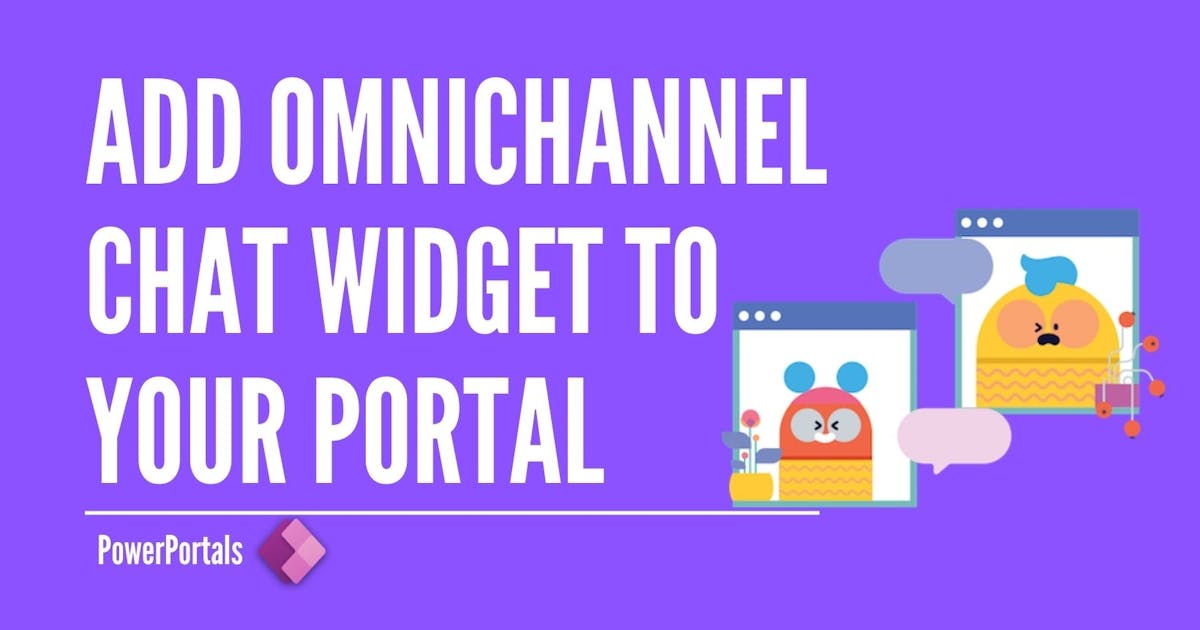Display Omnichannel chat widget in the footer of your portal

The combination of PowerPortals, Dynamics 365 Omnichannel and Power Virtual Agents increases the level of customer engagement for customers, in this post I'm going to guide you how to add your Omnichannel chat widget that you configured to your portal.
First, below are the pre-requisites to follow the blog,
- You have at least one Portal
- Omnichannel is installed
- Power Virtual Agent bot is configured to hand of chat conversations to Omnichannel
After having the above pre-requisites done, follow the below steps,
- From the "Omnichannel admin center" model-driven application
- Go to Workstreams and create and configure a new workstream based on your channel

- Enter your stream record, and click on "Copy code snippet"

- Switch to "Portal Management" model-driven app
- Create a new content snippet and past the copied snippet from Omnichannel work steam

- Go to "Web Templates" and enter the "Footer" record

- Search for the footer tag and add the widget using the below code
{% include 'snippet' snippet_name:'Your Chat Widget Name' %}
The footer tag will look like this
<footer role="contentinfo">
<div class="footer-top hidden-print">
<div class="container">
<div class="row">
<div class="col-md-6 col-sm-12 col-xs-12 text-left">
{% editable snippets 'About Footer' type: 'html' %}
{% include 'snippet' snippet_name:'Your Chat Widget Name' %}
</div>
</div>
</div>
</div>
- Clear your portal cache by navigating to "<< Your portal URL >>/_services/about"
You need to be logged in to your portal with a contact that has administrator portal role
click on "Clear Cache" button
- Refresh your portal and you will see the chat widget displayed!


That's it!
You want to add it to more web templates? follow the steps from step number 5 on the web template you like.
Published on:
Learn moreRelated posts
Customizing Copilot Agent appearance in Power Pages - Christmas edition
With the holidays upon us, I wanted the last article of the year to be light and on theme for Christmas. And what better way to do that than b...
Enhancing Power Pages interactivity with htmx
Learn how to use htmx to create an interactive UI without full-screen refreshes using Liquid (and no additional JS)
Data Retention Strategy in Power Pages – Automated Archival with Scheduled Power Automate Jobs
As Power Pages portals scale, the amount of data they generate grows exponentially—form submissions, bookings, cases, applications, event regi...
Power Pages Fundamentals #25: How to Connect Power Pages to Microsoft Fabric Using Power Apps Virtual Tables (Step-by-Step): Quick Read Series
During my discussion with community members, few of them approached me whether we can use Microsoft fabric and show the data in their websites...
Power Pages – Enhance governance for non-production site visibility
We are announcing enhanced site visibility governance for the non-production sites in Power Pages. This feature will reach general availabilit...
Dynamic Navigation Menu in Power Pages Using Dataverse
Make your portal navigation admin-controlled, configurable, and scalable. In traditional Power Pages (formerly Power Apps Portals), site navig...
How to Accelerate Power Pages Development Using Server Logic?
When developing portals or websites using Power Pages, makers often rely on client-side scripting or external flows to implement business rule...
Power Page WEB API Step by Step
You can use Power Pages Web API to achieve CRUD operation from Power Page. Folow these steps. Step 1 : Create Site Settings Create below site ...
Server Logic in Power Pages (Preview): Bringing Server-Side JavaScript to Your Portal
Introduction With the latest Server Logic (preview) feature in Power Pages, makers and developers can move beyond client-side JavaScript and L...
(Solved) Unable to Save Power Page making website to Public from Private
Whever you are trying to mark your power page website from private to public it unable to save. This problem occurs only when you are doing th...